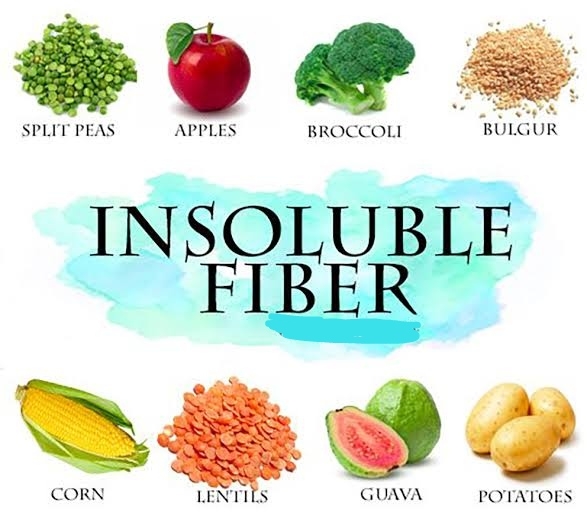Fibre
Dietary Fibres
Dietary fiber is the amount of food that comes from plant cells and is indigestible and unabsorbed to humans due to the lack of basic enzymes. Chemically, it is a polysaccharide. Fibre is present in grains, fruits, and vegetables, boosts general wellbeing, aids in preventing constipation, and improves digestive health. It contributes to a balanced and healthful eating pattern by giving the diet more volume without adding calories.
Types of Fibre
Fibre is classified into two types:
- Soluble fibre
- Insoluble fibre
Soluble Fibre
Soluble fibre is a type of dietary fiber that dissolves in water and forms a gel-like substance in the digestive tract. Unlike insoluble fibre, which remains unchanged as it passes through the digestive system, soluble fibre undergoes a transformation, creating a viscous solution that plays a crucial role in various aspects of human health.
This type of fibre is found in foods such as oats, barley, beans, fruits, and vegetables. When consumed, soluble fibre binds with water to form a gel, slowing down the digestion and absorption of nutrients. This gradual process helps regulate blood sugar levels by preventing rapid spikes and crashes. Additionally, soluble fibre has been linked to lowering cholesterol levels by binding to cholesterol molecules and aiding in their elimination from the body.
Moreover, the gel-like consistency of soluble fibre promotes a feeling of fullness, which can be beneficial for weight management by reducing overall calorie intake. Its ability to soften stools also makes it valuable in preventing constipation and promoting regular bowel movements. It also feeds the healthy bacteria inside our gut.
Insoluble Fibre
Insoluble fibre is a type of dietary fiber that remains largely unchanged as it passes through the digestive system. Unlike soluble fiber, which dissolves in water, insoluble fibre does not dissolve and retains its structure. This type of fiber is predominantly found in the cell walls of plant-based foods, such as whole grains, vegetables, and fruits.
The unique characteristic of insoluble fibre is its inability to dissolve in water, imparting certain beneficial effects on digestion and overall health. It adds bulk to stool, promoting regular bowel movements and preventing constipation by speeding up the passage of food through the digestive tract. Additionally, insoluble fibre contributes to a feeling of fullness, which can aid in weight management by reducing overall food intake.
While insoluble fibre doesn't provide many nutrients itself, it plays a crucial role in maintaining a healthy digestive system. By promoting regular bowel movements and preventing constipation, insoluble fiber contributes to overall gastrointestinal well-being and helps support a balanced and efficient digestive process. Including a variety of foods rich in insoluble fibre in your diet can contribute to a healthy and well-functioning digestive system.
Fibre's effect on nutrients
- Nutrient absorption (could cause delay)
- Barrier in digestion
- Nutrient binding







Comments
Post a Comment